Last Updated on June 24, 2017 by Marc Seward
What is a Stye?
Styes are a relatively common health complaint. Unless you are incredibly fortunate, most everybody will develop a stye at some point during their lifetime. If you are lucky, you may only get one or two, some people however are prone to reoccurring styes and they can be painful, irritating and downright ugly; certainly not a great look for the next selfie shot.
A Stye is sometimes called a hordeolum depending on where it is located. Styes and hordeolums are small, often painful puss filled abscess that forms either on the inside or the outside of the eyelid. The stye is most often caused by a bacterial infection called staphylococcus.
What causes a Stye?
A stye forms when an oil gland on the edge of the eyelid gets infected. Styes are typically caused by bacteria that grows on the root of eyelashes. An internal hordeolum is caused by an infection of the tarsal (or Meibomian) glands
There are 2 typical locations where a stye (external) or hordeolum (internal) forms
- An Internal Stye is called a hordeolum if it develops inside of the eyelid. These are caused by internal eye tarsal gland infections and can be more painful
- An External stye developed on the outside edge of the eyelid. These are more likely to be filled with pus.
Both types of stye can be painful but will typically go away on their own within a week.
Is it a Stye or Chalazion?
A chalazion is a lump on the eyelid. It is not the same thing as a stye. A chalazion is caused by inflammation and a stye is caused by an infection. Post infection some styes can cause long term inflammation that could develop into a granulomatous chalazion.
Are Styes Contagious?
A stye is an infection but that does not mean a stye is contagious. The simple anser is that styes are not contagious between people. Bacteria could be transmitted between people but the stye formation itself is a more complicated process.
There is no simple means of transmission and the body’s immune system would typically prevent contagion. The stye development is typically caused by bacteria but not always. If you have a stye and are worried about spreading it to others simply practice good hand washing hygiene.
Stye or Pink Eye?
Pink eye is a swelling of the eye’s surface. With a stye the redness is usually around the affected area. Typically, with Pink Eye there is more or an itching or burning feeling, lots of tearing and a thick discharge. Unlike a Stye-pink eye or conjunctivitis is highly contagious. Good hand washing is a must in order to prevent its spreading.
Stye causes
Styes are caused by bacterial infections. Some people may get a stye or be more stye prone after wearing contact lenses and attribute the stye to contact lenses. If new contact lenses appeared to cause a stye it could be attributed to a few things
- Improper cleaning of lenses
- Different type of cleaning solution causing irritation
- Different type of lenses (gas permable or daily soft lenses) causing irritation
Lenses may not directly cause a stye but might cause irritation to the Meibomian glands. The irritation can make an infection more likely—or cause inflammation—leading to a Chalazion to form. As mentioned earlier a Chalazion will appear very similar to a stye.
Stye and Blepharitis
People with Blepharitis have a chronic inflammation of the eyelids. It is a different condition entirely but people with Blepharitis are more prone to develop a Stye or Chalazion.
Stye and antibiotic ointments
There are no over the counter (OTC) antibiotic creams or ointments that should be used for a stye. If your stye remains persistent and has not healed within a week or so, then your doctor might prescribe antibiotic eye drops or creams.
Stye surgery
Only in rare cases would a surgery be required. Typically, only people with chronic, recurrent and multiple styes or chalazia would require surgery.
Stye Symptoms
The most obvious signs that a stye is developing are pain, swelling and redness. Following these symptoms, a lump will form in the affected area. Left untreated, most styes will heal themselves within a week or so but if you want to speed up the process, there are a number of home remedies, natural and otherwise that you can try.
How to Get Rid of a Stye
Before going any further, it is important to note that you should not squeeze or try to burst the stye yourself. I have seen videos on youtube showing someone popping a stye—this is not recommended and can do more harm than good.
A gentle rinse and cleaning of your eyelid should be the 1st step. Rough treatment can introduce even more bacteria and this could lead to secondary infection(s).


Home Remedies for a Stye
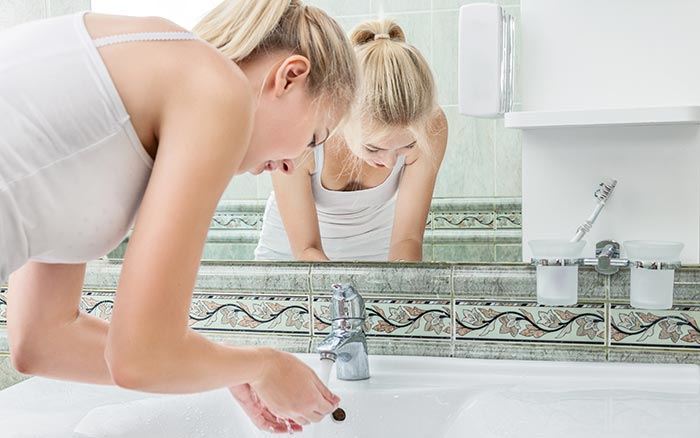
1. Cleanse the Stye
When you develop a stye, the very first thing you should do is to clean the affected area. Be sure to thoroughly wash your hands and then with a cotton pad or ball gently clean the stye with warm water.
2. Green Tea Bags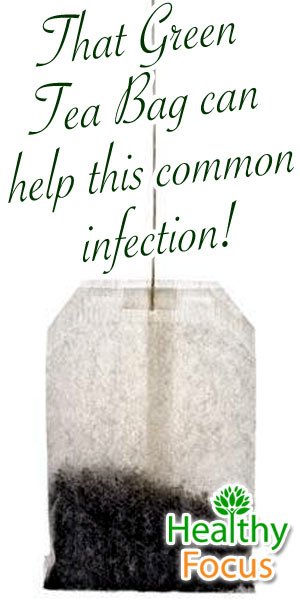
The merits of green tea are well known. It contains anti-inflammatory compounds which will help to ease the swelling and alleviate pain. Green tea also has antioxidant properties that among other things will promote healing.
- To prepare this treatment, simply dunk a green tea bag into a cup of warm water and leave it for a few minutes.
- Remove the tea bag from the cup and squeeze out any excess water.
- Press the moist tea bag onto the affected area of your eye and hold it in place for around 5 minutes or so.
- You can repeat this several times a day until your symptoms have eased or disappeared completely.
3. Make a warm Compress
A simple and effective way to treat your stye is by making a warm compress; it works by draining the puss from the stye and also relieves the burning pain in your eyes.
- Soak a clean washcloth in warm water and then squeeze out any excess liquid.
- Press the cloth over your eye and hold it in place for at least 10 minutes.
- You can repeat the process 3 or 4 times a day until your eye is healed.

4. Aloe Vera
Aloe vera is an effective treatment for styes because of its anti-inflammatory and anti-bacterial properties. It can help provide soothing relief when applied to the painful area of the eye and is perfectly safe to use regularly.
- Split an aloe leaf lengthwise and extract its pulpy gel.
- Either remove the gel from the leaf and rub it gently onto the affected area of the eye or apply it directly from the leaf.
- Leave the gel on your eye for around 20 minutes and then rinse your eyes with clean warm water.
- Repeat the process several times a day.

5. Prepare a Turmeric Solution
While turmeric is best known for its qualities in the kitchen, it can also be used to treat the painful symptoms of a stye. Turmeric contains anti-inflammatory and antibacterial properties that should help to get rid of your stye in prompt fashion.
- Prepare the solution by adding a tablespoon of turmeric to 2 cups of water.
- Boil the mixture until it is reduced by around a half.
- Let the solution cool and drain it through a cheese cloth.
- Use the final solution to cleanse your eye several times a day until your symptoms have gone.
6. Coriander Seeds
Like turmeric, coriander seeds are thought to be an effective home remedy for styes owing to their anti-inflammatory properties. Like turmeric, they can help relieve pain, swelling and redness from the affected area and should help you to feel better relatively quickly.
- Prepare the coriander seed solution by adding a teaspoon of seeds to a cup of water and boiling the mixture.
- Let the water cool down and then strain the mixture.
- You can now use the solution to cleanse the affected area of your eye several times a day.
7. Guava Leave Compress
Guava leaves are a popular home remedy for styes. Like coriander seeds and turmeric, they act as an anti-inflammatory and can help reduce swelling and relieve pain. I live in Thailand and we have a couple of guava trees in the garden but I have no idea how readily available they are elsewhere.
- Soak a cloth in hot water then squeeze out any excess water.
- Wash a couple of guava leaves and place them on the warm cloth, wrap it up well.
- Use the cloth as a compress and place on your eye.
- Hold it in place for 5 or so minutes.
- You can repeat this process twice a day until your symptoms have eased.
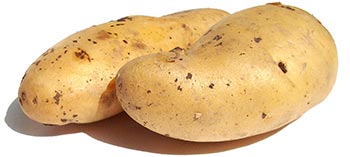
8. Potatoes
Believe it or not, potatoes are not only for mashing and frying, they have astringent properties that lend well to stye treatment. These properties aid the contraction of your skin and help ease irritation.
- Just grate a potato and mash it into a paste, then spread it onto a clean cloth and apply it to the affected area.
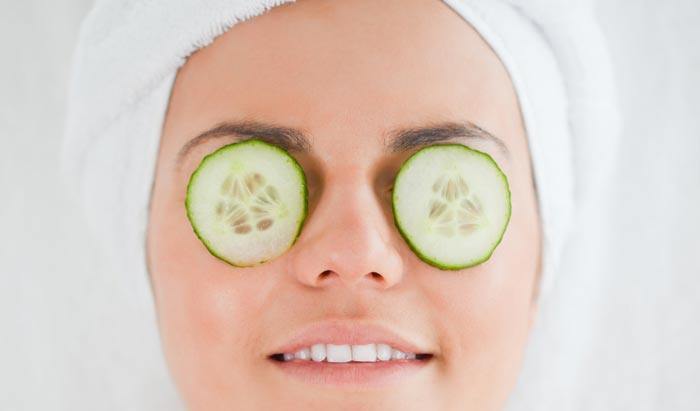
9. Cucumber
Cucumber has a cooling and soothing effect on your skin. Simply slice a cucumber and hold the slices in place on your affected eyelid to alleviate swelling and soreness.
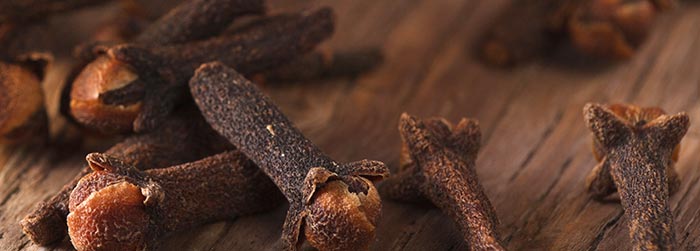
10. Cloves
This is a simple, convenient home remedy for styes, most people have cloves sitting in their kitchen somewhere and if not; they are readily available at your local supermarket. Cloves can help treat your stye by relieving pain and skin irritation; they also have anti-bacterial properties that will help prevent the spread of the infection.
- To prepare this remedy, soak 4 or 5 cloves in a glass of water for around 10 minutes.
- Strain the water and soak a clean cloth in the same water.
- Squeeze out any excess water and place the cloth on the affected are of your eye.
- Hold the cloth in place for 4 or 5 minutes.
- Do this 2 or 3 times a day for as long as necessary.
Hopefully some of these remedies will do the trick for you but if you want to make sure that you don’t get any styes in future, there are a few steps that you should follow.
- If you get frequent styes, then make sure to wash your eyelids regularly to avoid bacteria.
- Wash your hands before touching your eyes especially if you wear contact lenses and have to touch your eyes on a regular basis.
- Be careful with makeup…don’t share eye makeup with other people, apply it properly and be careful to remove any eye makeup before you go to bed. Also don’t wear eye makeup when you have a stye.
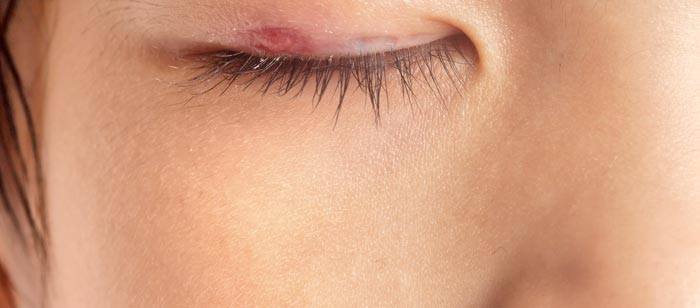

Leave a Reply
You must be logged in to post a comment.